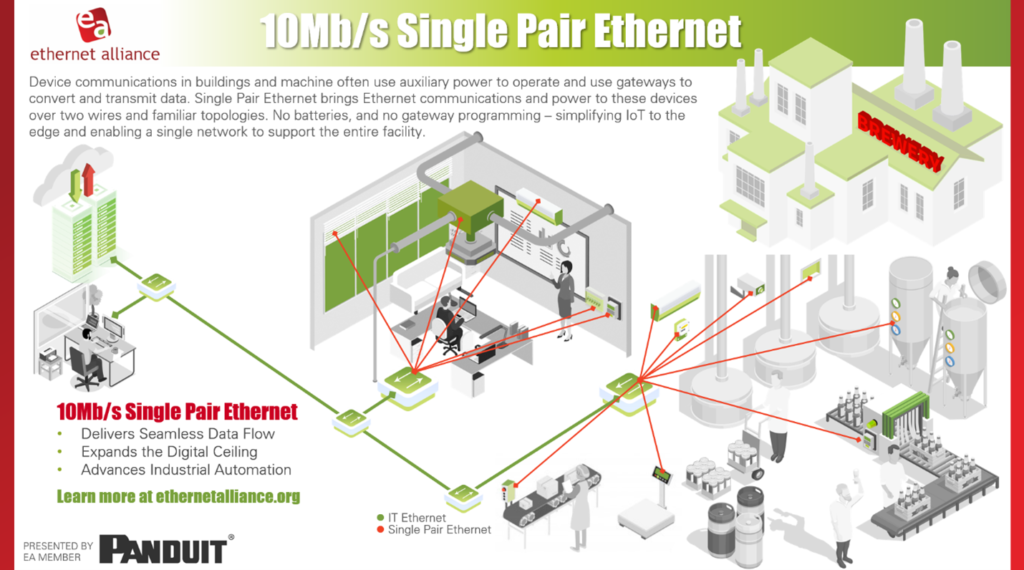Single Pair Ethernet in Automation
I have the distinct privilege of mentoring a team of bright and enthusiastic students as part of the FIRST® Tech Challenge®, a program that inspires children towards science and technology leadership and innovation. Each summer, students excitedly anticipate the challenge released near the beginning of the school year. For students early in the program, the process looks something like the following. Think about the functions that the robot must accomplish, divide up the tasks between students, and start building. As their lightly planned robot is built, they discover problems and have to implement workarounds because features conflict with each other, and they have to add new features to make the whole system work as desired. As these students mature, they begin taking a more planned approach to their design, to think through how all the features interact, and develop a more sophisticated system.
Watching how rapidly these students mature in their building of robots makes me reflect how building and automation systems are designed. Are these systems built so that the subsystems make up a more organically intelligent and elegant whole? Or are they built as a series of unrelated subsystems, each of which use different technology and require different types of expertise to support and maintain?
The Intelligence of Smart Buildings
The foundation, if not essence, of an intelligent system is communication. Just as the intelligence of a robot is based upon sensor inputs from its various components and its surroundings, the intelligence of a smart building is dependent upon the interaction between its various subsystems. A building might have multiple different controlled functions: Lighting, Elevators, HVAC, Door Access, Video, Perimeter Security, etc. The intelligence of that building could be described as how well these different functions are aware of each other, and how adaptable each function is to changes that occur in various parts of the building.
This intelligence can be approximated today by the use of gateways, which pull data from all subsystems and create a master control dashboard with visibility to all different functions. This enables a level of communication, although somewhat rigid since it must be programmed through the gateway. What would enable far deeper and more flexible communication between and through these automation functions, is the use of Ethernet as a standard communication method across an intelligent building or automation system.
Ethernet as the Standard Communication Method
Ethernet is a global standard for communications, from the lightning-speed data center technologies to real-time Ethernet used in automation and the relatively low bandwidth-consuming VoIP phones. It is supported by multiple different types of media including wireless, as well as fiber optic cable, 4-pair copper, and now a new standard for highly simplified single pair copper cables. All these systems fit together into a seamless communication network, with each device addressed and accessible throughout the system. Especially with the advent of Single Pair Ethernet (SPE), systems that formerly used RS-485 serial communications can be upgraded with little change to the media and brought into the broader Ethernet network. In addition, Single Pair Ethernet brings the added benefit of remote powering of devices using SPoE (Single Pair Power over Ethernet), a standard like the familiar PoE (Power over Ethernet).

Single Pair Ethernet is helping advance industrial automation
For buildings and automation systems to become more intelligent, their underlying communication systems must become standardized, if not integrated from the current mixture of analog, serial and Ethernet communications. Single Pair Ethernet is an ideal technology to continue this industry-wide transition to Ethernet. Those who build devices with serial or RS-485 communication interfaces do their customers a great service by evolving their devices toward this technology.
The latest infographic from the Ethernet Alliance delves into how SPE advances industrial automation. View it here.




